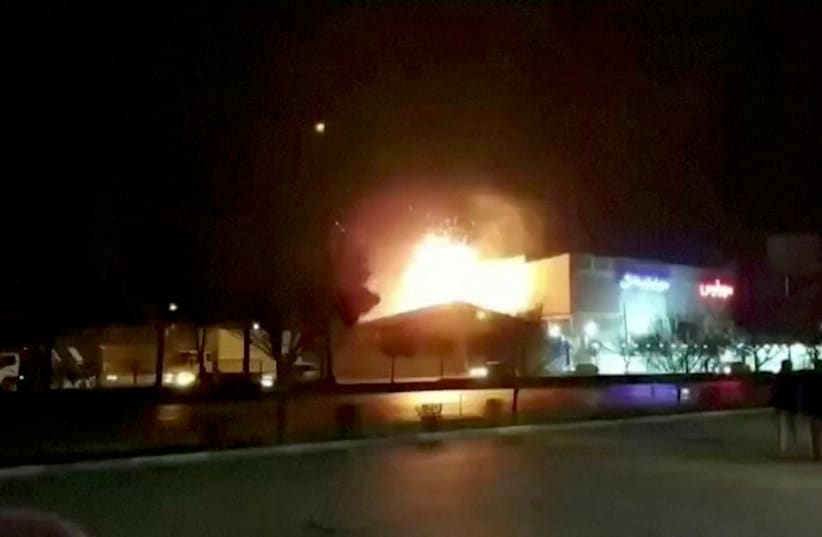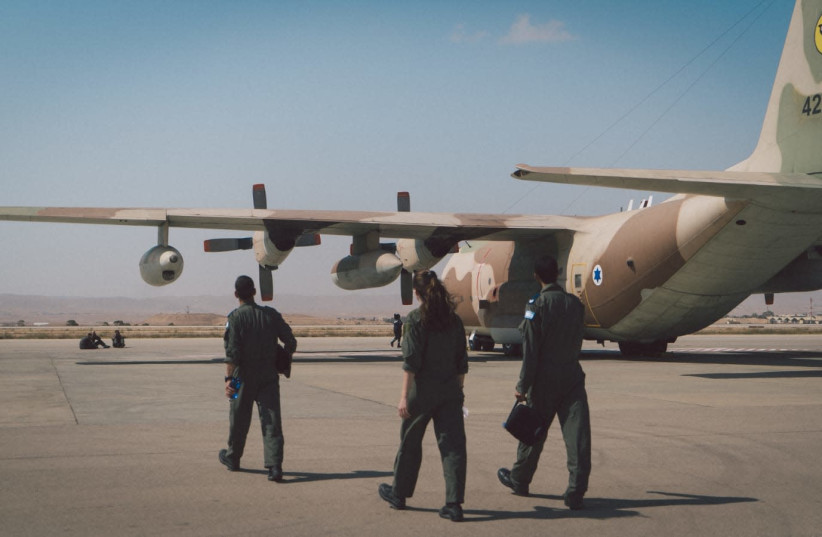It will probably be years before anyone will take public credit for the weekend drone attack on Iran’s facilities at Isfahan, but already in a matter of days, the attack may have reshuffled the entire picture regarding Iran.
The most important outcome: The US has lost patience with the Islamic Republic and is willing in one way or another to flex its muscles and, according to foreign sources, give more support to Israel to do so.
Until this past week, there had been a number of US and Israeli joint drills which could have been veiled threats to Tehran to at least freeze the progress of its nuclear program. However, these drills took place often at the same time as Washington was sounding hopeful messages about a return to diplomacy, or at least not messages that diplomacy was dead.
In May 2022, the US provided refueling platforms for the Israel Air Force to hold one of its largest-ever drills for carrying out “deep” attacks far away from Israel’s borders – often a metaphor for Iran.
In July 2022, the US and Israel held a joint exercise to help protect Israel from Iranian ballistic-missile threats. There were also assorted US-Israel naval and other drills.
However, by August 2022, the US and the world powers were talking about Iran as if a return to the nuclear deal was all but signed.
So it is hard to say that the pre-August 2022 drills sent much of a message about US seriousness to support a viable military option against the ayatollahs’ nuclear program.
US-Israel joint drill
By the time the US and Israel held a joint air force drill in November 2022, the deal had fallen apart, but America had not closed the door on negotiations.
Fast forward to mid-January, when US Secretary of State Antony Blinken said, “With regard to the JCPOA, the Iranians killed the opportunity to come back to that agreement swiftly many months ago.”
The Joint Comprehensive Plan of Action had not been on Washington’s agenda as a “practical matter for many months now,” he added. “It’s not our focus. We’re focused on what’s happening in Iran. We’re focused on what Iran is doing in terms of the provision of weapons to Russia to use against innocent people and the entire energy grid in Ukraine.”
“All options are available on the table to prevent Iran from obtaining a nuclear weapon.”
US Secretary of State Antony Blinken
US State Department representatives had said similar things before, but now it was coming from the top.
From January 22-25, the US and Israel held what was called at the time their largest-ever joint drill for attacking “deep” targets, just as US National Security Advisor Jake Sullivan was visiting Israel.
In the middle of those drills, on January 25, International Atomic Energy Agency Director-General Rafael Grossi described the JCPOA as “an empty shell,” saying diplomatic activity linked to reviving the 2015 nuclear deal was close to nonexistent.
“Nobody has declared it dead, but no obligation is being pursued, and … every limit that existed in the JCPOA has been violated several times,” Grossi said.
Overnight between January 28-29 this past weekend, the drone attack on Isfahan took place.
Hours after the attack, Blinken told Al Arabiya that Washington still preferred a diplomatic option to prevent a nuclear Iran and ending its aggression but that “all options are available on the table to prevent Iran from obtaining a nuclear weapon.”
“Nobody has declared it dead, but no obligation is being pursued, and... every limit that existed in the JCPOA has been violated several times,” he said.
Overnight between Saturday and Sunday this past weekend, the drone attack on Isfahan took place.
Hours after the attack, Blinken said Washington still preferred a diplomatic option to prevent a nuclear Iran and ending its aggression. But “all options are available on the table to prevent Iran from obtaining a nuclear weapon,” he told Al Arabiya.
At the same time that the drone attack occurred, while Blinken was taking an ever-tougher line on Iran, and only days after the giant US-Israeli joint drill, CIA Director William Burns was holding meetings in Israel.
Of course, these could all be coincidences. Prime Minister Benjamin Netanyahu just regained power one month ago, so it is not strange that many US officials would be coming through.
But when you add together the kind of officials coming through, their much tougher tone about the deal being dead, the joint drills and the drone strike, it seems very unlikely that the drone strike did not have US support.
There are all sorts of ways to parse the Pentagon statement that the US had no military involvement in the drone strike.
Might it have had intelligence or cyber involvement? Even if the US really did nothing, the cumulative impact of the strike along with the converging vectors makes it clear that Iran is now far more threatened than it might have been only a few months ago.
The Biden administration was patient with nuclear negotiations with Tehran for nearly two years, and it did very little besides wave its finger in disapproval and add symbolic new sanctions when the ayatollahs continued to move closer to the nuclear threshold.
It is not patient anymore. Whether that is because of Iran supplying drones to Russia with which to attack Ukraine or Tehran’s mass killings of its own people – the gloves are off.
The question now is whether Iran will take the hint and adjust its behavior in some way, as it did in 2012, or remain intransigent and leave whoever hit Isfahan this weekend – the Mossad, according to foreign sources – with increasing American support to do even greater damage.

